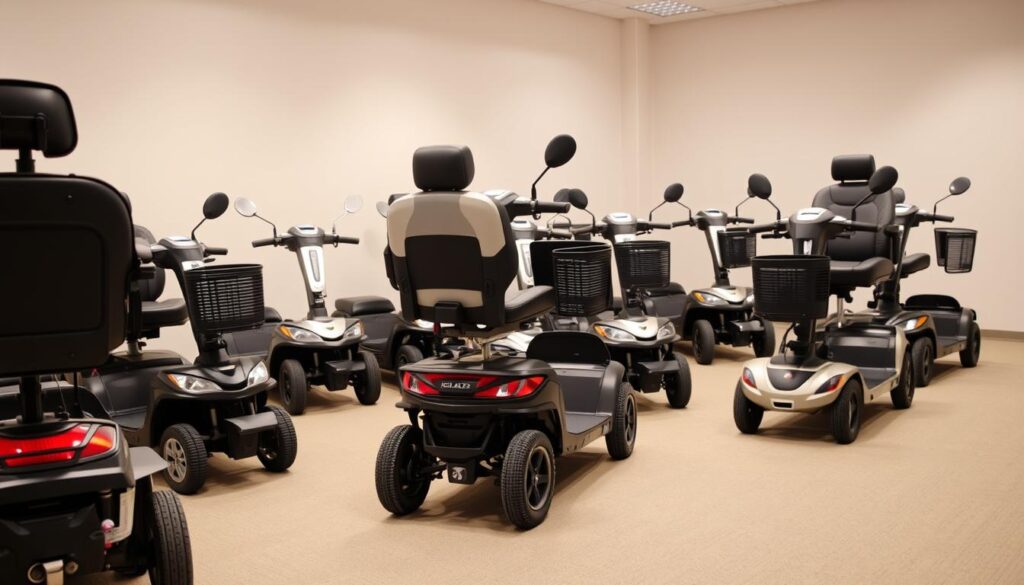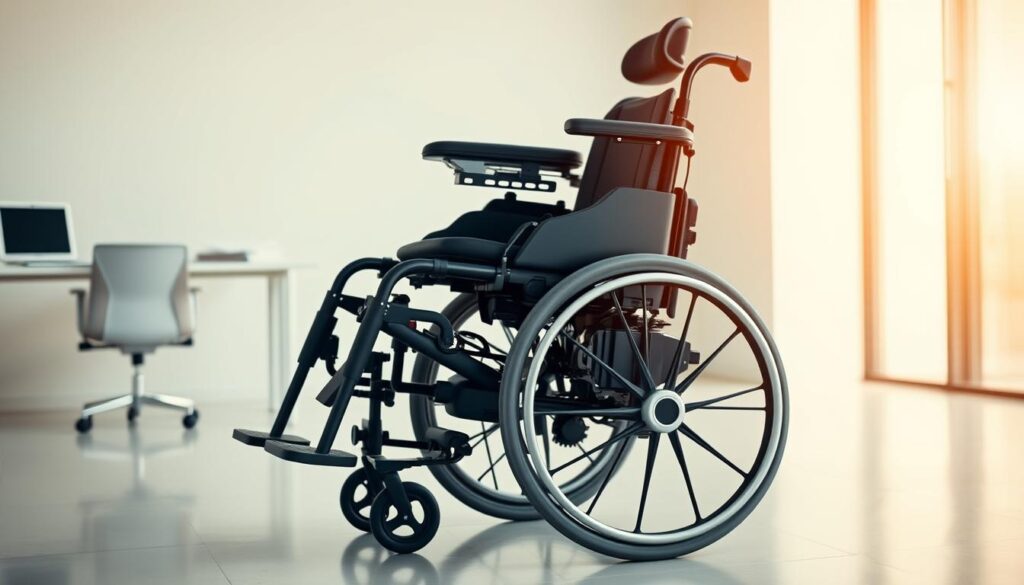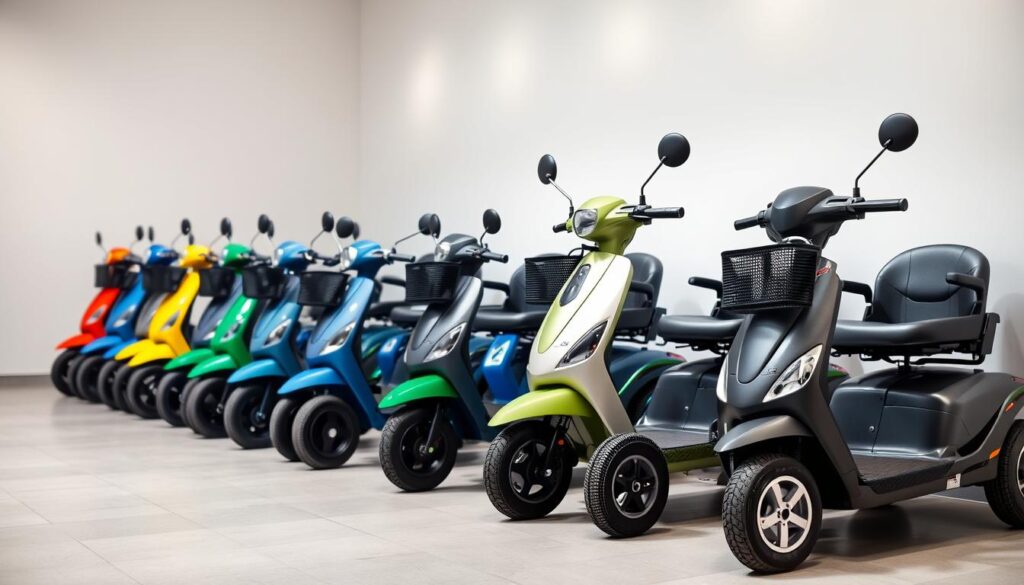For many, mobility is more than just a convenience; it’s a fundamental aspect of independence. If you’re one of the millions relying on mobility scooters or other devices to navigate daily life, you understand the importance of maintaining your freedom to move.
Protecting your mobility investment is key, and that’s where insurance for mobility devices comes in. Knowing your options, including what’s covered under medicare approved mobility scooters programs, can give you peace of mind and financial security.
When thinking about your mobility needs, it’s vital to see how insurance can protect your ability to live life on your terms.
Key Takeaways
- Understanding the importance of insurance for mobility devices
- Exploring coverage options for mobility scooters
- Learning about medicare approved mobility scooters
- Protecting your investment in mobility
- Safeguarding your independence with the right insurance
What Are Mobility Devices for Disabled Individuals
Mobility equipment, like mobility scooters, greatly improves life for people with disabilities. These tools give users the freedom to move around easily. They help people navigate their surroundings with confidence.
Types of Mobility Equipment
There are many types of mobility equipment out there. This includes disability car vehicles and wheelchair accessible vehicles. Each type is designed to meet different needs, ensuring everyone finds a suitable mobility solution.
How Mobility Devices Improve Quality of Life
Mobility devices make a big difference in the lives of disabled individuals. They offer the freedom to move and do things on their own. This independence lets users join in community activities and stay healthy.
Common Models and Their Features
Popular mobility devices include mobility scooters and wheelchair accessible vehicles. These models have features like adjustable seats and storage. They also have advanced navigation systems to meet users’ specific needs.
Understanding Disabled Buggy Insurance
Disabled buggy insurance can seem complex, but it’s vital for your freedom. If you use a mobility device, knowing about insurance is key. It helps keep you moving and independent.
What Qualifies as a Disabled Buggy
A disabled buggy, or mobility scooter, helps those with mobility issues. They come in electric or manual types and are essential for daily life. To get insurance, your device must be medically needed and prescribed by a doctor.
Why Standard Insurance Doesn’t Provide Adequate Coverage
Standard policies, like homeowners or auto insurance, often don’t cover mobility devices well. These devices need special protection against damage, theft, or liability. For example, a standard policy might not cover the full cost of a stolen or damaged mobility scooter.
Legal Requirements for Mobility Device Insurance
There’s no federal law requiring insurance for mobility devices, but some states have their own rules. Having insurance is also a smart move, as it protects your investment in a mobility device. Knowing the laws and recommendations in your area helps you choose the right coverage.
Learning about disabled buggy insurance helps protect your mobility device. It ensures you’re covered in unexpected situations. Whether buying a new scooter or updating your insurance, being well-informed is essential.
Essential Coverage Options for Mobility Devices
As a user of a mobility device, you know how vital insurance coverage is. Devices like disabled buggies are not just costly but also key for your freedom. So, it’s important to protect them from different risks.
Liability Coverage
Liability coverage is a must-have for your mobility device insurance. It shields you if you’re blamed for an accident that hurts others or damages their stuff. It can cover legal costs, medical bills, and more.
Comprehensive Coverage
Comprehensive coverage covers damage not from accidents, like theft, vandalism, or natural disasters. It’s a big help, making sure you don’t face huge costs to fix or replace your device.
Collision Coverage
Collision coverage helps if you’re in an accident. It pays for fixing your device or replacing it if it’s beyond repair. This is key to keep using your device without delay.
Medical Payments Coverage
Medical payments coverage is also vital. It covers medical costs for you or your passengers in an accident, no matter who’s at fault. It’s a big help, covering expenses that other insurance might not fully cover.
Knowing about these coverage options helps you make smart choices for your mobility device insurance. By picking the right mix of liability, comp, collision, and medical payments, you’re well-protected against many risks and financial losses.
Medicare Coverage for Mobility Scooters
If you rely on a mobility scooter and are a Medicare beneficiary, knowing your coverage options is key. Medicare covers mobility scooters under specific conditions. This can greatly improve your mobility and independence.
Medicare Part B Coverage Requirements
To get Medicare Part B coverage, your scooter must be medically necessary. This means you need a serious condition that makes it hard to move around.
Medicare Part B covers Durable Medical Equipment (DME), like mobility scooters. But, the scooter must be used at home, not just outside.
Documentation Needed from Healthcare Providers
Your healthcare provider must show you need a mobility scooter. They need to provide:
- A detailed diagnosis of your condition
- How the mobility scooter will improve your mobility
- A statement confirming that you use the scooter in your home
Medicare-Approved Mobility Scooter Models
Not all mobility scooters are covered by Medicare. The scooter must be Medicare-approved. This means it meets Medicare’s DME guidelines.
Examples of approved scooters include those for indoor and outdoor use. They should have adjustable speeds and be foldable for easy transport.

Limitations of Medicare Coverage
While Medicare covers a lot of the scooter’s cost, there are limits. You’ll pay 20% of the Medicare-approved amount. You might also face deductibles.
| Coverage Aspect | Medicare Part B Details |
|---|---|
| Coverage Requirement | Medically necessary, used in the home |
| Documentation Needed | Detailed diagnosis, mobility improvement statement |
| Cost Responsibility | 20% of Medicare-approved amount |
Knowing about Medicare’s coverage for mobility scooters helps you use the system better. It ensures you get the mobility aid you need.
Private Insurance Options for Disabled Buggies
It’s important to know your private insurance options for your disabled buggy. Private insurance can give you more specific coverage than standard policies.
Specialized Mobility Insurance Providers
Specialized mobility insurance providers offer policies just for mobility devices. They know what disabled buggy owners need. Their coverage includes damage, theft, and liability.
Add-on Coverage to Existing Policies
Think about adding coverage to your current policies. It’s a smart way to get more protection without paying for the same thing twice.
Comparing Insurance Plans
It’s key to compare different insurance plans to find the right one. Look at coverage limits, deductibles, and premium costs. A comparison table can make it easier.
| Insurance Provider | Coverage Type | Premium Cost |
|---|---|---|
| Provider A | Comprehensive | $500/year |
| Provider B | Liability | $300/year |
| Provider C | Collision | $400/year |
Online Resources for Finding Coverage
Use online tools to compare insurance plans and find the best for your disabled buggy. Sites like Insure.com and NerdWallet offer great insights and tools.
By exploring your private insurance options and comparing plans, you can protect your disabled buggy. This gives you peace of mind and financial security.
Cost Factors That Affect Your Disabled Buggy Insurance
The cost of insuring your mobility device can change a lot. Knowing what affects it can help you save money.
Device Value and Type
The price and type of your mobility device matter a lot. More costly or complex devices usually cost more to insure.
Usage Patterns and Location
How and where you use your device can change your insurance costs. Using it a lot in risky places might make it more expensive.
Driver History and Experience
Your driving history and experience are key. A clean record and lots of experience can lower your premiums.
Storage and Security Measures
Good storage and security for your device can cut costs. Keep it in a safe place and use anti-theft devices.

Insurance for Wheelchair Accessible Vehicles
Insurance for wheelchair accessible vehicles is more than just car insurance. It’s about keeping your freedom. These cars are special, needing insurance that fits their unique needs.
Specialized Coverage Needs
These vehicles need specialized insurance. It covers the car and its special parts. This includes the wheelchair ramp, tie-downs, and more.
Modifications Insurance
Modifications insurance is key. It pays for fixing or replacing the special equipment. This can save you a lot of money.
Top Insurance Providers for Adapted Vehicles
Some top insurance providers for adapted vehicles include:
- Progressive
- GEICO
- USAA
These companies offer policies made for wheelchair accessible vehicles. They understand your needs.
Cost Comparison for Specialized Vehicles
The cost of insurance varies. It depends on the car’s value, how much it’s been modified, and the driver’s history. Always compare quotes to find the best deal.
Knowing what insurance you need and comparing policies is important. It helps protect your wheelchair accessible vehicle. This way, you keep your freedom and independence.
Financial Assistance Programs for Mobility Devices
Getting mobility devices can be tough, mainly because of the cost. But, there are many financial help programs out there. They aim to make it easier for people to get the devices they need.

Disability Grants for Vehicles
Many groups offer disability grants for vehicles. These grants help people buy cars that fit their mobility needs. They can pay a big part of the car’s price, making it cheaper for those with disabilities.
- The National Organization on Disability provides grants for vehicle modifications.
- The Disabled Veterans National Foundation offers assistance for disabled veterans.
State-Specific Assistance Programs
Each state has its own help for people with disabilities. These state-specific assistance programs give financial aid, job training, and more. They are a big help for those looking for mobility devices.
“State-specific programs can be a vital resource for individuals seeking mobility devices,” says Jane Doe, a disability advocate.
Non-Profit Organizations Providing Support
Many non-profit organizations help people with disabilities get mobility devices. They offer money, devices, and other support. These groups are key in helping those in need.
- The Mobility Foundation provides financial assistance for mobility devices.
- The Wheelchair Foundation offers wheelchairs and other mobility aids to those in need.
Tax Deductions for Mobility Equipment
There’s also a chance to get tax breaks for mobility equipment. The IRS lets you deduct medical expenses, like mobility devices, if they’re needed. This can lower your taxes.
To get these deductions, list your medical expenses on your tax form. It’s smart to talk to a tax expert to make sure you qualify.
Buying a Vehicle While on Disability Benefits
If you’re on disability benefits and thinking about buying a car, knowing your financing options is key. Getting a vehicle can greatly improve your mobility and freedom.
Financing Options for Disabled Individuals
There are many financing options for people with disabilities. You can look into:
- Special auto loans for disabled people
- Grants and subsidies for buying vehicles
- Financing for adapted vehicles
Using Disability Benefits for Vehicle Purchases
In some cases, you can use your disability benefits to buy a car. It’s important to talk to your benefits provider to know the rules.
| Benefit Type | Usage for Vehicle Purchase |
|---|---|
| Social Security Disability Insurance (SSDI) | Limited use; check with provider |
| Supplemental Security Income (SSI) | Generally not allowed |
Special Programs for Vehicle Acquisition
There are special programs to help disabled people get vehicles. These include:
- Adaptive Vehicle Grants: Grants for making vehicles accessible
- Disabled Veteran Programs: Special loans for disabled veterans
By looking into these options and understanding the financing programs, you can make a smart choice when buying a vehicle on disability benefits.
Filing Claims for Damaged or Stolen Mobility Equipment
Losing or damaging your mobility scooter can be stressful. But, filing an insurance claim can help ease that stress. Knowing the process and what documents you need is important for a smooth claims experience.
Documentation Requirements
To file a claim, you’ll need to gather specific documents. These include:
- Proof of ownership
- Police report (if stolen)
- Photos of the damage
- Repair estimates
Step-by-Step Claims Process
The claims process usually involves:
- Notifying your insurance provider
- Submitting required documentation
- Waiting for the claim to be processed
- Receiving a settlement or repair authorization

Expediting Claim Resolution
To speed up your claim, make sure all documents are correct and submitted quickly. You can also follow up with your insurance provider to check on your claim’s status.
What to Do When a Claim is Denied
If your claim is denied, you can appeal. Read the denial letter carefully. If needed, gather more information. Then, contact your insurance provider to talk about your options.
Maintaining Your Mobility Device to Reduce Insurance Costs
Keeping your mobility device in good shape is key. It’s not just for its performance. It can also lower your insurance costs. Regular upkeep helps avoid accidents and claims, saving you money in the long run.
Preventative Maintenance Schedule
Creating a preventative maintenance schedule is vital. It means checking the battery, tires, brakes, and more regularly. This way, you catch problems early and fix them before they get worse.
For instance, cleaning the battery terminals and checking tire pressure can boost your device’s safety and performance.
Security Measures for Lower Premiums
Adding security measures can also cut your insurance costs. This includes locking it up, using alarms, and fitting GPS trackers. These steps help protect your device and might lower your premiums.
Documentation of Maintenance
It’s important to keep a detailed log of your maintenance. This record shows you’re serious about keeping your device in top shape. It could lead to lower insurance rates.
By following these tips, you can make your mobility device last longer and save on insurance costs.
Conclusion: Ensuring Your Mobility and Independence
Keeping your mobility safe is key to staying independent. Disabled buggy insurance helps protect your devices from damage, theft, or loss. Knowing your insurance options helps you make choices that keep you mobile and free.
You’ve discovered the importance of insurance for your mobility devices. You’ve also learned about Medicare and private insurance. Taking care of your device and finding ways to save on insurance can also help.
Now, it’s time to take steps to safeguard your mobility. Look over your insurance choices and pick the best one for you. This way, you can enjoy using your mobility device without worry, knowing you’re covered.
FAQ
What is disabled buggy insurance, and why do I need it?
Disabled buggy insurance protects your mobility device from damage, theft, or loss. It keeps your investment safe. This way, you can keep moving freely.
Does Medicare cover mobility scooters, and what are the requirements?
Medicare Part B covers mobility scooters if they’re medically necessary. You need a doctor’s order and a face-to-face visit. This is to qualify for coverage.
What types of mobility devices are covered under disabled buggy insurance?
This insurance covers many devices. This includes power wheelchairs, mobility scooters, and other electric or manual wheelchairs.
Can I add mobility device insurance to my existing policy?
Yes, you can add it to your current policy. This includes homeowners or renters insurance.
How do I compare insurance plans for my mobility device?
Look at coverage limits, deductibles, and premium costs. Also, check the provider’s reputation for handling claims.
Are there any financial assistance programs available for mobility devices?
Yes, there are programs like disability grants and state-specific support. Non-profit organizations also offer help for mobility devices.
What factors affect the cost of disabled buggy insurance?
The cost depends on the device’s value and type. It also depends on how often you use it, your driving history, and how you store and secure it.
How do I file a claim for a damaged or stolen mobility device?
You’ll need to provide proof of ownership and a police report if it was stolen. Follow the insurance’s claims process to get it resolved quickly.
Can I use my disability benefits to purchase a vehicle?
Yes, you can use your benefits for a vehicle or accessibility modifications. There are special programs and financing options for this.
How can I reduce my insurance costs for my mobility device?
Keep your device in good condition and secure it well. Documenting maintenance can also help lower your costs.
Are there specific insurance providers for wheelchair accessible vehicles?
Yes, there are providers that focus on wheelchair accessible vehicles. They offer coverage for modifications and adaptations.
What are the limitations of Medicare coverage for mobility scooters?
Medicare only covers scooters deemed medically necessary. They must meet specific criteria. Medicare may not cover all costs, though.

